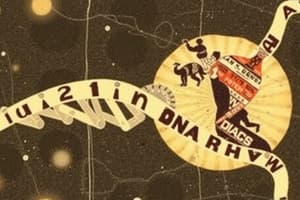Podcast
Questions and Answers
During DNA replication, what serves as a template to guide the synthesis of new complementary sequences?
During DNA replication, what serves as a template to guide the synthesis of new complementary sequences?
- Single strands of DNA (correct)
- Ribosomes
- tRNAs
- mRNA
Which process involves unzipping the two DNA strands so they separate into single strands?
Which process involves unzipping the two DNA strands so they separate into single strands?
- Translation
- Protein assembly
- Replication (correct)
- Transcription
What carries the genetic code out of the nucleus during protein synthesis?
What carries the genetic code out of the nucleus during protein synthesis?
- tRNAs
- mRNA (correct)
- Ribosomes
- DNA
Which enzyme is responsible for creating a single chain mRNA strand during transcription?
Which enzyme is responsible for creating a single chain mRNA strand during transcription?
In DNA replication, how do the newly synthesized strands relate to the original strands?
In DNA replication, how do the newly synthesized strands relate to the original strands?
What is the first step in translating genomic information into functional proteins?
What is the first step in translating genomic information into functional proteins?
What is the iconic shape that represents the structure of DNA?
What is the iconic shape that represents the structure of DNA?
Who proposed the double helix model of DNA's structure in 1953?
Who proposed the double helix model of DNA's structure in 1953?
Which two nucleotides always pair together in the DNA double helix structure?
Which two nucleotides always pair together in the DNA double helix structure?
What is the process by which DNA makes an RNA copy?
What is the process by which DNA makes an RNA copy?
Which process creates an exact copy of the DNA molecule?
Which process creates an exact copy of the DNA molecule?
During which process is the genetic information in mRNA used to build proteins?
During which process is the genetic information in mRNA used to build proteins?
Flashcards are hidden until you start studying
Study Notes
Overview of DNA Structures
Deoxyribonucleic acid, commonly known as DNA, is the molecule responsible for encoding genetic information within living organisms. It plays a crucial role in various biological processes such as growth, reproduction, and functional adaptation. Understanding the structure of DNA is essential because it explains how this molecular blueprint can store vast amounts of information and transmit it accurately throughout generations. Here we will explore some key aspects related to the fundamental building blocks of life—the DNA structures like double helix, DNA replication, DNA translation, and DNA transcription.
Double Helix Structure
The most basic explanation of DNA's structure compares it to a twisted ladder, with sugar and phosphate groups running along one side and two purine-pyrimidine rungs forming the other. This iconic shape was first proposed by James Watson and Francis Crick in 1953 based on X-ray crystallography images taken by Rosalind Franklin and Maurice Wilkins. The double helix model shows two parallel chains of nucleotides wound around each other like a spiral staircase, joined together through complementary base pairing: Adenine always pairs with Thymine, while Cytosine always pairs with Guanine; these bonds hold the strands together in a stabilizing double helix form.
Replication Process
During cell division, newly formed cells must inherit their complete set of genetic instructions from the parent cell, which includes the entire genome contained in its DNA. Therefore, it needs to produce exact copies of itself before dividing. This process called DNA replication involves unzipping the two DNA strands so they separate into single strands; the original sequence serves as a template to guide the synthesis of new, identical matching sequences in a semi-conservative manner, meaning both strands after being separated serve as templates for making new complementary strands.
Translation Step
Once DNA replication has produced a copy of the genomic material, the next step is to translate this information into functional proteins using the ribosomes. For this purpose, a specific region known as mRNA (messenger RNA) carries the genetic code out of the nucleus where it interacts with transfer RNAs (tRNAs), carrying amino acids that correspond to codons (sets of three adjacent bases) found in the messenger RNA, eventually leading to protein assembly.
Transcription Event
Simultaneously, another event occurs in the nucleus: Transcription. In this process, part of the DNA containing the gene of interest gets copied into an mRNA molecule. Just like during replication, DNA separates into individual strands, but instead of creating perfect replicas as in replication, this time only one of those strands serves as a template, and the enzyme RNA polymerase creates a single chain mRNA strand that closely matches the DNA sequence it's transcribed from. Then, the nascent mRNA moves away from the DNA to the cytoplasm where translation takes place.
In summary, understanding DNA structures starts with appreciating the double helix conformation, followed by comprehending how DNA replicates and translates its information into physical entities via transcription and translation events respectively. These complex biochemical machinations allow our bodies to grow, reproduce, respond to environmental changes, and maintain homeostasis.
Studying That Suits You
Use AI to generate personalized quizzes and flashcards to suit your learning preferences.



